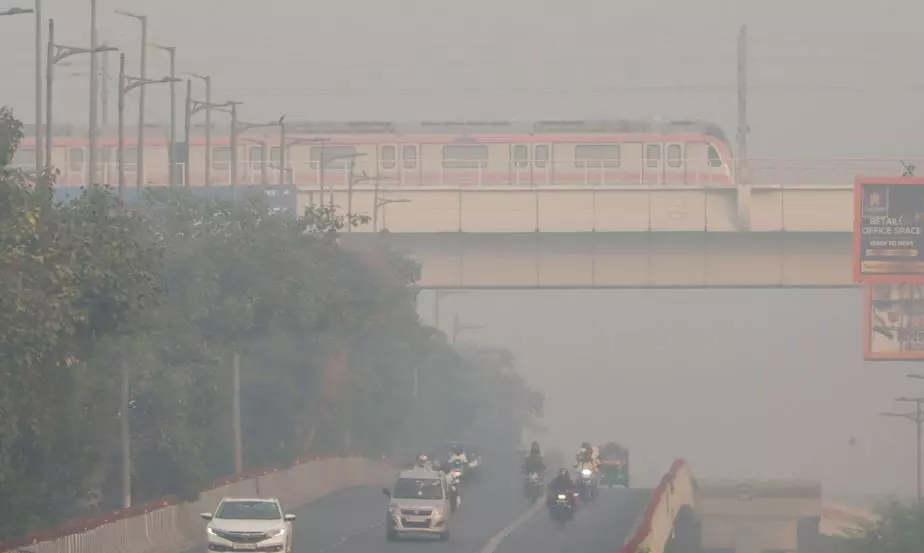People Residing Around Nacharam and Mallapur IALA Limits at Health Risk

Hyderabad:Over 3,000 residents of Raheja Vistas in Nacharam, along with thousands of their neighbours, are grappling with severe air pollution, noise and health risks from chemical factories, pharmaceutical plants, paint manufacturers and plastic production units in the Nacharam and Mallapur industrial areas.
The residential complex of about 900 families have to reckon with everyday health challenges from industrial emissions. The residents complain of persistent chemical odour, especially at night, with sulphur, ammonia, and burnt materials permeating the air.
“We wake up choking around 3 am due to the suffocating smell. It is so terrible that even after the windows are shut, the smell lingers till morning,” said Girija Naidu, a homemaker.
Parents were particularly concerned about their children’s health, with nearly 500 children in the complex and thousands more attending nearby schools such as DPS Nacharam and Johnson Grammar School.
“We were promised that all adjoining industries would be relocated by 2024. While that has not transpired, as yet, the pollution levels have worsened,” said Indulekha M., a resident.
“Short-term exposure to sulphur dioxide can cause coughing, wheezing and bronchospasms, even at low levels like 0.1 ppm. Ammonia exposure irritates the respiratory tract and, at higher concentrations, can cause severe distress,” said consultant pulmonologist Dr Madhava Rao.
He warned that children are especially vulnerable due to their developing lungs and highlighted symptoms like persistent coughing and wheezing as red flags for respiratory damage.
The Pollution Control Board (TGPCB) maintains that pollution levels are within permissible limits, citing their inspection data. Tesidents argue that their daily experiences contradict these readings. “When PCB teams visit, everything seems fine, but we live with this ordeal day in and day out,” said a resident with expertise in industrial health and safety.
The board did not respond to questions about the latest air quality readings, pollutants measured, or the equipment used. Nor did they clarify why residents report foul odour and health issues despite the permissible levels, or how pollution levels worsen at night.
PCB regional officer Venkatnarsu admitted, “These residential apartments are located within an industrial zone, and I’m unsure how permissions were granted. We regularly send teams to verify complaints but identifying sources of pollution is quite challenging.”
He added that industries could face action if abnormalities are detected.
The government had promised to relocate industries outside the ORR by 2022 vide GO Ms. No. 20. The deadline has been extended to 2025, with progress reportedly under review.
“Shifting industries doesn’t solve the problem; it just moves it,” said environmentalist Subba Rao B.V., trained under USAID. “We need air sheds like water sheds to tackle the root causes. In Thailand, industrial associations bear collective responsibility for compliance. India needs similar laws to ensure accountability.”
Advocate Agasthya Sharma, president of Raheja Vistas Elite Social Welfare Association, Nacharam, expressed frustration. “We bought homes with promises of pollution control, but nothing has changed. We feel trapped in an environment that’s harming our health and quality of life,” he said in exasperation.
Dirty air
According to the American Industrial Hygiene Association (AIHA), odour thresholds for sulphur dioxide and ammonia are 0.3-5 and 5 parts per million (ppm), respectively.
Central Pollution Control Board (CPCB) sets the permissible limit for ammonia in residential areas at 400 µg/m³ (24-hour average) and for sulphur dioxide at 80 µg/m³ (24-hour average).
Consultant pulmonologist Dr Madhava Rao says frequent exposure implies cumulative risks. Without stricter monitoring and enforcement, the health of people living in the vicinity will keep deteriorating.”

